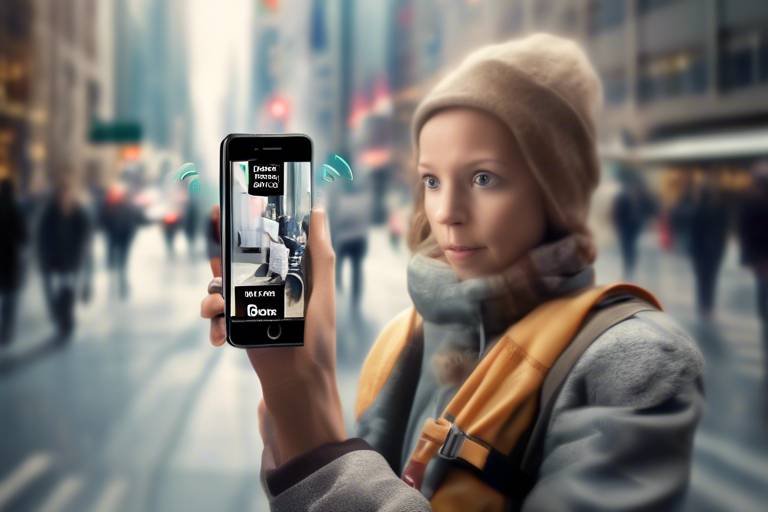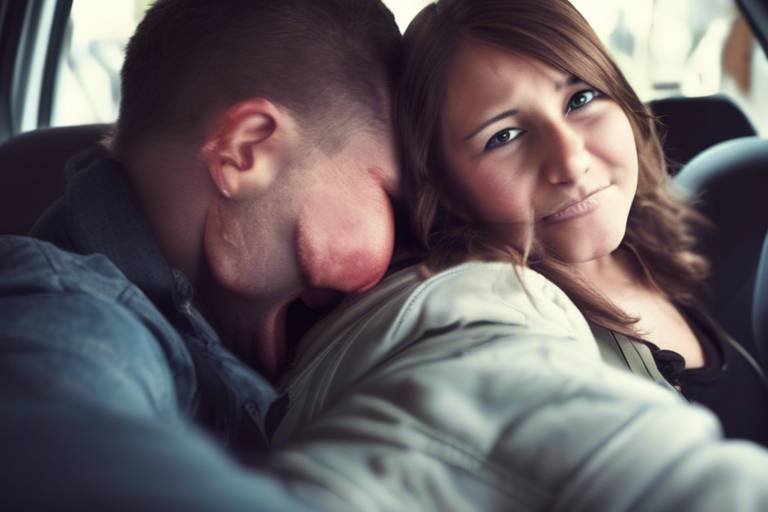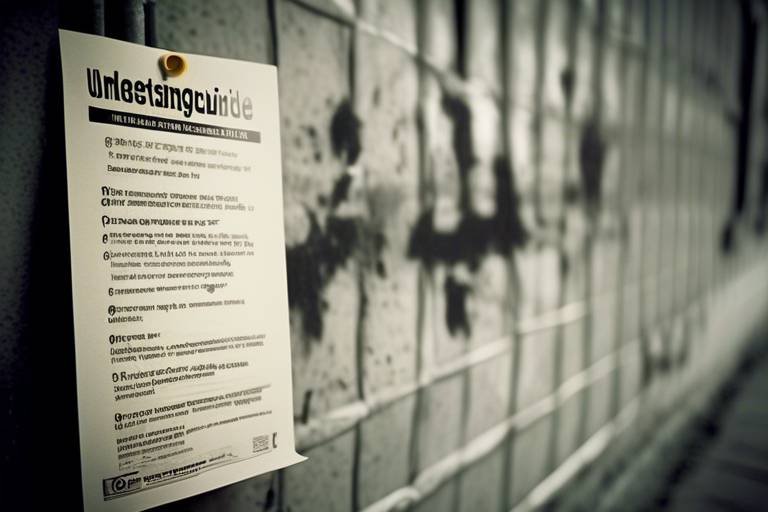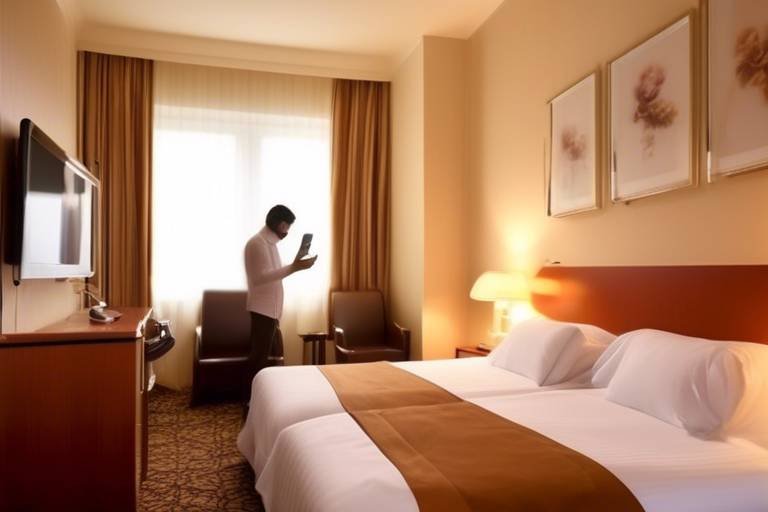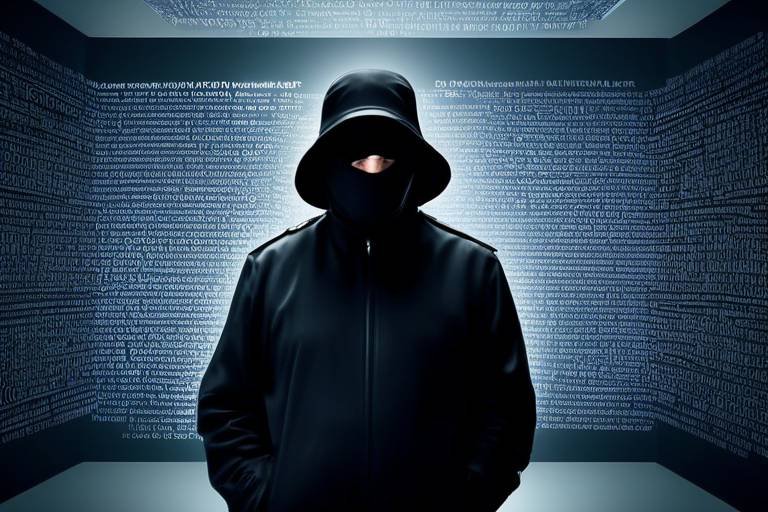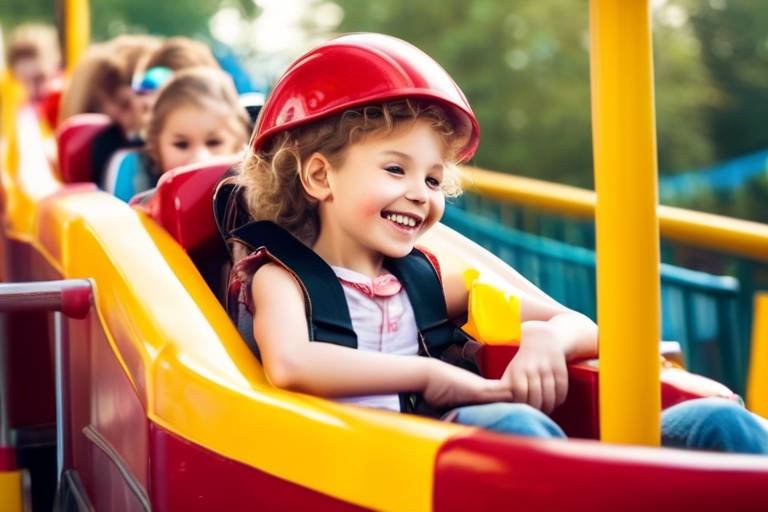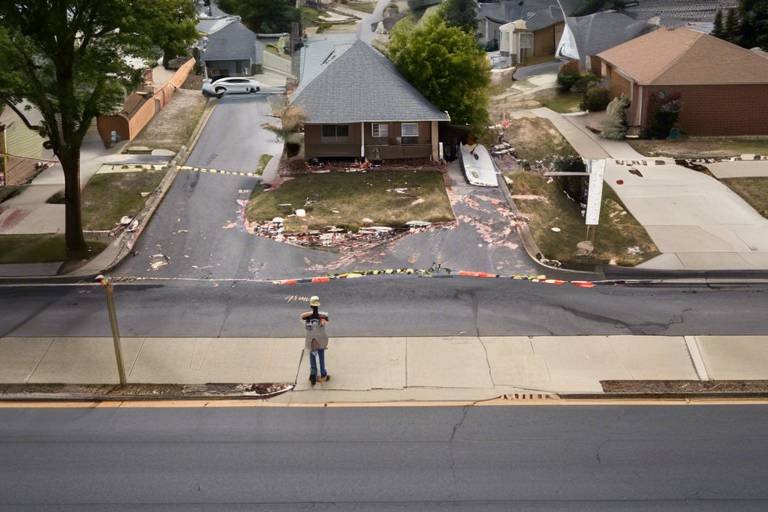Offline Safety Tips in The Digital Age
In an increasingly digital world, offline safety remains crucial. As we immerse ourselves in technology and social media, it's easy to overlook the importance of protecting ourselves in the physical realm. While the internet offers convenience, it can also expose us to various risks that we must navigate carefully. The good news? With a few simple strategies and a heightened sense of awareness, you can safeguard both yourself and your belongings in everyday situations. This article explores essential tips that ensure a balanced approach to personal security, blending both your online and offline lives seamlessly. So, let’s dive into the world of offline safety and discover how you can stay protected in this fast-paced digital age!
Identifying potential offline risks is the first step in safeguarding yourself. Every day, we encounter various situations that could pose threats to our safety. From crowded public transportation to busy shopping malls, the modern world is filled with opportunities for mishaps. Some common threats include theft, scams, and even personal attacks. For instance, think about how often you find yourself distracted by your phone while walking down the street. This simple act can make you vulnerable to pickpockets or other dangers lurking nearby. By being aware of these risks, you can take proactive steps to protect yourself and remain vigilant in your daily life.
Being aware of your surroundings can significantly enhance your safety. Cultivating mindfulness is not just about meditation; it's about being present in the moment and tuning into your environment. When you step out of your home, take a moment to observe your surroundings. Are there people nearby? What do they look like? Are there any unusual activities happening? These observations can help you gauge whether you are in a safe environment. Additionally, practicing mindfulness can improve your ability to react quickly in unexpected situations. It’s like being a radar, constantly scanning for potential threats while enjoying the world around you.
Your intuition can be a powerful tool. Have you ever felt uneasy in a situation without knowing exactly why? That gut feeling is your subconscious picking up on subtle cues. This is why it’s essential to listen to your instincts when assessing potentially unsafe situations. If something feels off, it probably is. Trusting your gut can lead you to take the necessary precautions, whether that’s crossing the street to avoid a group of people or leaving a party if the atmosphere feels tense. Remember, your safety is paramount, and it's always better to err on the side of caution.
Learning to identify warning signs can help you avoid danger. Red flags can manifest in various forms, such as aggressive behavior, overly friendly strangers, or someone invading your personal space. For example, if someone is asking too many personal questions or seems overly interested in your belongings, it might be time to distance yourself. By being aware of these warning signs, you can take action before a situation escalates. It’s like being a detective, piecing together clues to ensure your safety.
Crowded areas can pose unique challenges. Whether you’re at a concert, a bustling market, or a packed subway, it’s easy to become disoriented and lose track of your belongings. To maintain alertness in these environments, consider the following strategies:
- Keep your belongings close: Use a crossbody bag or a secure backpack to ensure your items are always within reach.
- Stay aware of your surroundings: Make it a habit to glance around periodically, noting who is near you.
- Establish a buddy system: If you're with friends, keep an eye on each other and communicate about your whereabouts.
By implementing these strategies, you can navigate crowded spaces with confidence and reduce your risk of becoming a target.
Being prepared for emergencies is vital for your safety. Emergencies can happen at any time, and having a plan can make all the difference. Consider the types of emergencies you might encounter, such as natural disasters, medical emergencies, or personal safety threats. Create a simple emergency kit that includes essentials like water, first aid supplies, and a flashlight. Additionally, familiarize yourself with local emergency services and create a communication plan with family and friends. This preparation is akin to having a safety net; it gives you peace of mind knowing you’re ready for any situation.
The intersection of online and offline safety is increasingly important. In today’s world, your digital presence can impact your offline safety and vice versa. For instance, sharing your location on social media can alert others to your whereabouts, which may not always be safe. It’s essential to strike a balance between enjoying the benefits of social media and protecting your privacy.
Understanding the implications of sharing personal information online is crucial. While social media can help you connect with others, it can also expose you to risks if you’re not careful. Avoid oversharing details about your daily routine or travel plans, as this information can be misused by malicious individuals. Think of your social media account as a house; would you leave the door wide open for strangers to walk in? Probably not! Keep your online presence secure by being selective about what you share.
Implementing privacy settings on your digital accounts can enhance your offline safety. Regularly review your privacy settings on platforms like Facebook, Instagram, and Twitter to control who can see your posts and personal information. Additionally, consider using two-factor authentication for added security. By managing your online presence, you can protect yourself offline, creating a barrier between your digital life and potential threats.
Q: How can I improve my personal safety in public spaces?
A: Stay aware of your surroundings, trust your instincts, and avoid distractions like your phone. Keep your belongings secure and be mindful of who is around you.
Q: What should I do if I feel unsafe?
A: If you feel uncomfortable, remove yourself from the situation. Find a safe place, and don’t hesitate to ask for help if needed.
Q: How can I protect my online privacy?
A: Regularly review your privacy settings on social media, avoid oversharing personal information, and consider using strong passwords and two-factor authentication.

Understanding Offline Risks
In our fast-paced world, where technology often takes center stage, it’s easy to overlook the offline risks that still loom large. While we may feel secure behind our screens, the reality is that danger can lurk just outside our digital bubbles. Understanding these risks is the first step in safeguarding ourselves in our daily lives. From the moment we step out of our homes, we encounter various situations that may expose us to potential threats.
Think about it: how often do you walk through a crowded street, engrossed in your phone, oblivious to your surroundings? This is a prime example of a vulnerability that can lead to unfortunate incidents. According to statistics, a significant number of thefts and assaults occur in public spaces, particularly when individuals are distracted. Therefore, being aware of your environment is crucial. It’s not just about avoiding dangerous areas; it’s about recognizing that danger can arise in the most familiar places.
Here are some common offline risks to consider:
- Theft: Whether it’s your wallet, phone, or bag, thieves often target individuals who appear distracted or unaware.
- Assault: Personal safety can be compromised in crowded places, especially if someone feels emboldened by the anonymity of the crowd.
- Accidents: Everyday activities like crossing the street or using public transport can pose risks if you’re not paying attention.
Moreover, certain environments can heighten these risks. For instance, poorly lit areas or deserted streets can become hotspots for criminal activity, making it essential to be cautious and aware of your surroundings. It’s crucial to assess your environment regularly, much like a pilot checks their instruments before takeoff. By maintaining a proactive mindset, you can significantly reduce your chances of becoming a victim.
In addition to physical threats, there are also social risks to consider. Interactions with strangers can sometimes lead to uncomfortable or dangerous situations. Understanding social dynamics and recognizing when someone may not have your best interests at heart can be invaluable. Whether it's a seemingly friendly stranger or an acquaintance who crosses boundaries, having the ability to discern these situations can help you navigate social interactions safely.
Ultimately, the key to understanding offline risks lies in awareness and preparation. By being vigilant and taking proactive measures, you can create a safer environment for yourself and those around you. Remember, just as you wouldn’t ignore the warning lights on your car dashboard, don’t ignore the signs that may indicate potential danger in your everyday life.

Personal Awareness and Mindfulness
In our fast-paced world, where distractions are just a click away, maintaining personal awareness and mindfulness is more important than ever. Have you ever found yourself lost in thought while walking down the street, only to realize you have no idea what’s happening around you? It’s a common scenario, but it can be dangerous. By sharpening your awareness and practicing mindfulness, you can significantly enhance your safety and well-being.
To cultivate mindfulness, start by engaging in simple exercises that ground you in the present moment. For instance, when you’re out in public, take a moment to observe your surroundings. Notice the people around you, the sounds, and even the smells. This practice not only keeps you alert but also helps you develop a deeper connection with your environment. You might be surprised at how much you miss when your mind is elsewhere!
One effective technique to improve your situational awareness is to establish a habit of scanning your environment regularly. This means taking a few seconds to look around you, especially in crowded places like shopping malls or public transport. Ask yourself: Are there any exits nearby? Is anyone acting suspiciously? By making this a routine, you’ll be better prepared to respond to any potential threats.
Your intuition is a powerful ally. If something feels off, it probably is. Trusting your gut can be a lifesaver in uncertain situations. For example, if you’re walking alone at night and feel uneasy about a person approaching you, listen to that instinct. It’s better to be safe than sorry. Remember, your instincts are often based on subtle cues that your brain picks up, even if you’re not consciously aware of them.
Being able to identify warning signs can help you steer clear of danger. Here are some common red flags to watch for:
- Someone who is overly persistent in trying to engage you in conversation.
- A group of people who seem to be watching you or following you.
- Someone who invades your personal space without your consent.
When you notice these signs, it’s essential to take them seriously. Your safety should always come first, and knowing when to walk away or seek help can make all the difference.
Crowded areas can be overwhelming, but they can also be a breeding ground for potential threats. To stay alert, consider the following strategies:
- Keep your belongings secure and close to you.
- Avoid using your phone excessively; it can distract you from your surroundings.
- Stay aware of your personal space and be cautious of anyone who gets too close.
By implementing these strategies, you’ll not only feel more secure but also enjoy your surroundings more fully. Think of it like being a detective in your own life, always on the lookout for clues that could indicate a change in your environment.
Being prepared for emergencies is crucial for your safety. Take the time to familiarize yourself with local emergency services and have a plan in place. Whether it’s knowing the nearest exit in a crowded venue or having a designated meeting spot with friends, preparation can help you respond swiftly in a crisis. Remember, it’s not about living in fear but empowering yourself with knowledge and readiness.

Trust Your Instincts
In a world filled with distractions and noise, trusting your instincts can be your best line of defense. Have you ever walked into a room and felt an uneasy vibe? That gut feeling isn’t just a random thought; it’s your subconscious processing signals that your conscious mind hasn’t fully grasped yet. Our instincts are finely tuned to pick up on subtle cues in our environment, and ignoring them can sometimes lead to dangerous situations.
Think about it: how often have you felt that something just wasn’t right? Maybe you were approached by a stranger who seemed overly friendly or found yourself in an unfamiliar neighborhood that felt off. These moments are crucial because they signal that you should stay alert or even remove yourself from the situation. Your instincts serve as a built-in alarm system, designed to keep you safe. So, the next time you feel that little voice in your head urging you to be cautious, listen to it!
Recognizing when to trust your instincts can be a game-changer. Here are a few scenarios where your intuition can guide you:
- Social Interactions: If someone’s behavior feels off, it’s okay to distance yourself. Your safety comes first!
- Traveling Alone: When exploring new places, if a situation feels uncomfortable—like an empty subway car late at night—consider waiting for the next train.
- Online Interactions: If a conversation online seems too good to be true, it probably is. Trust your gut to avoid scams.
Moreover, it’s essential to practice self-awareness and reflect on your feelings. Ask yourself questions like, “Why do I feel this way?” or “What’s making me uncomfortable?” This kind of introspection can help you better understand your instincts and improve your decision-making skills. Remember, trusting your gut isn’t about being paranoid; it’s about being proactive in protecting yourself.
In conclusion, your instincts are powerful tools that can help you navigate through life’s uncertainties. By learning to recognize and trust these feelings, you can enhance your overall safety and well-being. So, the next time you feel that gut reaction, don’t brush it off—embrace it as your personal safety compass!
- How can I improve my instinctual awareness?
Practice mindfulness and pay attention to your feelings in various situations. The more you tune in, the stronger your instincts will become. - What should I do if I feel unsafe?
Trust your instincts and remove yourself from the situation if possible. Seek help if necessary and report any suspicious behavior. - Can instincts be wrong?
While instincts can sometimes be influenced by irrational fears, they are often based on subconscious observations. It’s essential to evaluate the context before acting.

Recognizing Red Flags
In the journey of life, navigating through social interactions can sometimes feel like walking through a minefield. It’s essential to be equipped with the right tools to recognize red flags that may indicate danger or discomfort. These warning signs can manifest in various forms, often showing up in subtle ways that might go unnoticed if you’re not paying close attention. For instance, consider the tone of someone's voice. Is it overly aggressive or condescending? Such a tone can be a significant indicator of potential conflict. Additionally, body language plays a crucial role; crossed arms, lack of eye contact, or excessive fidgeting can suggest that someone may not be trustworthy.
Moreover, it’s important to be aware of your own feelings in social situations. If you find yourself feeling uneasy or anxious around a particular person, don’t dismiss those feelings. Your intuition is often your best ally in identifying potential threats. Remember, it's not just about the obvious signs; sometimes, it's the subtle shifts in energy that can signal something is off. For example, if someone is overly eager to share personal information about you while revealing little about themselves, it could be a tactic to manipulate or control the conversation.
Here are some common red flags to watch for in social interactions:
- Inconsistency: If someone's words don't match their actions, that’s a major red flag. Trust is built on consistency, and when it’s lacking, so is safety.
- Excessive Flattery: While compliments can be nice, excessive flattery may be a tactic to lower your guard.
- Isolation Attempts: If someone tries to isolate you from friends or family, it’s a clear sign of controlling behavior.
Recognizing these red flags is not just about safeguarding yourself; it’s also about empowering yourself to make informed decisions. Every interaction is a chance to learn and grow, and being aware of these warning signs can significantly enhance your ability to protect your personal space and mental well-being. Trust your gut, stay alert, and don’t hesitate to remove yourself from situations that feel wrong. Remember, safety begins with awareness, and recognizing red flags is a vital part of that process.
Q: What should I do if I recognize a red flag in a social situation?
A: If you notice a red flag, trust your instincts. It's best to remove yourself from the situation or seek help if necessary. Your safety is paramount.
Q: Can red flags vary from person to person?
A: Yes, red flags can be subjective. What feels uncomfortable for one person may not feel the same for another. It's essential to listen to your own feelings and perceptions.
Q: How can I improve my ability to recognize red flags?
A: You can enhance your awareness by practicing mindfulness, engaging in self-reflection, and educating yourself about common signs of unhealthy behaviors in others.

Staying Alert in Crowded Places
When you're navigating through crowded places, such as bustling markets, busy streets, or packed public transport, it’s easy to feel overwhelmed. The sheer number of people can create a sense of anonymity, which might make you less vigilant. However, staying alert in these environments is crucial for your personal safety. So, how can you ensure that you remain aware and secure while surrounded by crowds? One effective strategy is to constantly scan your surroundings. This doesn't mean you need to be paranoid; rather, think of it as keeping your "safety radar" on. By casually observing the people around you, you can pick up on unusual behavior or situations that might require your attention.
Another important aspect is to maintain a comfortable distance from others whenever possible. Crowded places often lead to unintentional jostling, which can make you an easy target for pickpockets or other opportunistic criminals. If you find yourself in a tightly packed area, try to position yourself near walls or barriers, where you can create a buffer zone. This not only makes you less vulnerable but also gives you a clearer view of your surroundings. For instance, when waiting for public transport, stand back from the edge of the platform and keep your belongings close to you.
Additionally, it's wise to limit distractions. In our digital age, many of us are glued to our smartphones, scrolling through social media or checking messages. While it's tempting to stay connected, being engrossed in your device can significantly reduce your situational awareness. Instead, make a conscious effort to keep your phone tucked away, especially in crowded areas. If you need to use it, do so quickly and in a secure location. Remember, your safety is more important than a quick text or social media update.
Lastly, trust your instincts. If something feels off, it probably is. Your gut feelings are often your best defense in crowded spaces. For example, if you notice someone behaving suspiciously or if you feel uncomfortable in a particular area, don’t hesitate to remove yourself from that situation. It’s better to be safe than sorry. Cultivating a mindset of alertness can be the difference between a safe outing and an unfortunate incident. So, keep your head up, stay aware, and prioritize your safety!
- What should I do if I feel unsafe in a crowded place? Trust your instincts and remove yourself from the situation as quickly as possible. Look for security personnel or a safe location.
- How can I keep my belongings safe in a crowd? Use a secure bag that you can keep close to your body, and be mindful of your surroundings. Avoid placing valuables in easily accessible pockets.
- Are there specific signs of suspicious behavior I should look for? Yes, look for individuals who seem overly focused on others, those who are lingering without purpose, or anyone acting nervously.

Emergency Preparedness
When it comes to safety, being prepared for emergencies is not just a good idea—it's a necessity. Imagine walking through your neighborhood and suddenly encountering a natural disaster or an unexpected personal threat. The chaos that ensues can be overwhelming, but having a solid plan in place can make all the difference. Emergency preparedness is about more than just having a first aid kit; it’s about creating a comprehensive strategy that covers various scenarios. This involves understanding potential risks, having a plan, and ensuring that you and your loved ones know what to do in case of an emergency.
First and foremost, it’s crucial to identify the types of emergencies that could affect you. Depending on your location, this could range from natural disasters like earthquakes and floods to personal safety threats such as home invasions. Take a moment to consider the following:
- Natural Disasters: Earthquakes, hurricanes, floods, and wildfires.
- Personal Safety Threats: Home invasions, assaults, or theft.
- Health Emergencies: Sudden illness or accidents.
Once you've identified potential risks, it’s time to develop a plan. This plan should include clear steps for each type of emergency. For instance, if you live in an area prone to hurricanes, knowing evacuation routes and having a go-bag ready can save your life. A go-bag should contain essentials like water, non-perishable food, a flashlight, batteries, and necessary medications. But don’t stop there; think about your family or household. Make sure everyone knows the emergency plan and understands their role. Regular drills can help reinforce this knowledge, making it second nature when the moment comes.
Another critical aspect of emergency preparedness is communication. In a crisis, you may not be able to rely on your usual means of contact. Consider establishing a family emergency contact who lives out of town. This person can serve as a point of communication for everyone in your family, ensuring that you can check in and share information even if local lines are down. Additionally, keep a list of important phone numbers—like local emergency services, family members, and trusted friends—handy in your go-bag.
Lastly, don't underestimate the power of community. Join local groups focused on emergency preparedness. These communities often share resources, host training sessions, and can provide support in times of need. Being part of a network can enhance your safety and preparedness, as you can lean on each other during crises.
Q: What should I include in my emergency go-bag?
A: Your go-bag should contain water, non-perishable food, a flashlight, batteries, a first aid kit, medications, and important documents like identification and insurance papers.
Q: How often should I review my emergency plan?
A: It’s a good practice to review your emergency plan at least twice a year, or whenever there are significant changes in your household or community.
Q: What if I have pets?
A: Include pet supplies in your go-bag, such as food, water, and any medications they may need. Make sure your emergency plan accounts for your pets as well.
Q: How can I stay informed about local emergencies?
A: Sign up for local alerts through your community’s emergency management office, and consider downloading apps that provide real-time updates on emergencies in your area.

Digital Safety and Offline Interactions
In today’s world, where our lives are intertwined with technology, it’s essential to recognize that digital safety and offline interactions are two sides of the same coin. The digital footprints we leave behind can significantly impact our offline safety. For instance, oversharing on social media can inadvertently expose you to risks in the real world. Have you ever thought about how a seemingly innocent post about your vacation could alert potential thieves that your home is empty? It’s a stark reminder that every click and share carries weight.
Moreover, being conscious of your digital presence means being aware of how others perceive you online. Your social media profiles often serve as a first impression for many people, including potential employers, friends, and even strangers. Thus, it’s crucial to maintain a positive and secure online image. This isn’t just about curating a perfect profile; it’s about ensuring that the information you share doesn’t compromise your safety. For example, consider the implications of posting your location in real-time. While it might seem fun to share your adventures, it can also make you vulnerable to unwanted attention.
To enhance your digital safety, you should regularly review your privacy settings across various platforms. This proactive approach allows you to control who sees your information and how it can be used. Take a moment to ask yourself: Are your profiles set to private? Are you aware of who can view your posts and photos? By managing your online presence, you can significantly reduce the risks associated with offline interactions.
Here are some critical points to consider when thinking about the intersection of digital safety and offline interactions:
- Be Cautious with Friend Requests: Not everyone who sends you a friend request has good intentions. Take the time to vet new connections before accepting them.
- Limit Personal Information: Avoid sharing sensitive details such as your home address, phone number, or financial information on public platforms.
- Think Before You Post: Always consider the potential consequences of your posts. Could they be misinterpreted, or could they reveal too much about your personal life?
Additionally, consider how your online interactions can affect your offline relationships. For instance, a heated debate on social media can spill over into real life, potentially creating tension with friends or family. It’s essential to maintain a balance between expressing your opinions and preserving your relationships. Remember, words can have lasting effects, both online and offline.
In conclusion, the blending of digital and offline worlds necessitates a heightened awareness of how our online actions can impact our real-life safety and interactions. By being mindful of what we share and how we present ourselves online, we can create a safer environment for ourselves and those around us. So, the next time you’re about to hit that ‘post’ button, take a moment to reflect: Is this worth the risk?
Q: How can I enhance my digital privacy?
A: Regularly review and update your privacy settings on social media platforms, limit the amount of personal information you share, and be cautious about friend requests.
Q: What should I do if I feel unsafe due to something I posted online?
A: Consider removing the post, adjusting your privacy settings, and reporting any concerning interactions. Trust your instincts and prioritize your safety.
Q: Can my online behavior affect my offline relationships?
A: Yes, online interactions can influence how people perceive you in real life. It’s important to maintain respectful and constructive communication, even in digital spaces.

Social Media Awareness
In this fast-paced digital age, social media has become an integral part of our lives. It's where we connect, share, and express ourselves. However, with great connectivity comes significant risks. Have you ever stopped to think about how much personal information you're putting out there? The truth is, every post, photo, and check-in can have implications for your offline safety. For instance, sharing your location in real-time can alert potential intruders that your home is vacant. It's like leaving the front door wide open and inviting trouble in!
To navigate this landscape safely, it's essential to cultivate a sense of . Start by being mindful of what you share. Ask yourself: "Is this information necessary?" or "Could this put me or my loved ones at risk?" For example, posting about your upcoming vacation can be exciting, but it also broadcasts to the world that your home will be unoccupied for a while. Instead, consider sharing those delightful vacation photos after you return home, keeping your private life just that—private.
Moreover, understanding your audience is crucial. Not everyone on your friend list has your best interests at heart. It's wise to regularly review your friends and followers, ensuring that only trusted individuals have access to your personal updates. You might even want to adjust your privacy settings to limit who can see your posts, making it harder for strangers to gather information about you.
Another critical aspect of social media awareness is recognizing the difference between public and private information. Here’s a quick breakdown:
| Public Information | Private Information |
|---|---|
| Your name | Your home address |
| Your birthday | Your phone number |
| Job title | Financial details |
As you can see, while some information may seem harmless, it can be pieced together to create a more detailed picture of your life. This is why it's crucial to limit the amount of personal information you share online. Think of your social media profiles as a window into your life—do you really want everyone peeking in?
Lastly, always be cautious about the links you click and the accounts you interact with. Cybercriminals often use social media as a hunting ground to exploit unsuspecting users. If something seems too good to be true, it probably is! Protecting your personal information online requires vigilance and a healthy dose of skepticism.
In summary, being aware of how you engage with social media is vital for maintaining your offline safety. By being mindful of what you share, regularly reviewing your privacy settings, and staying alert to potential threats, you can enjoy the benefits of social media without compromising your security.
- What should I avoid sharing on social media?
It's best to avoid sharing sensitive information like your home address, phone number, financial details, and real-time location. - How can I enhance my privacy on social media?
Review your privacy settings regularly, limit your audience for posts, and be selective about who you accept as friends or followers. - What are the signs of a potential social media scam?
Be wary of unsolicited messages, too-good-to-be-true offers, and accounts that seem suspicious or lack a history.

Privacy Settings and Security Measures
In today's hyper-connected world, where every tap on your smartphone can reveal a piece of your life, managing your privacy settings is not just a good idea—it's essential. Think of your online presence as a house; the doors and windows represent the various platforms you use, and the privacy settings are the locks that keep unwanted visitors out. If you leave them unlocked, you're inviting trouble without even realizing it. So, how can you effectively secure your digital life?
First and foremost, take a moment to review the privacy settings on your social media accounts. Platforms like Facebook, Instagram, and Twitter allow you to customize who can see your posts, send you friend requests, or even tag you in photos. By limiting your audience to only trusted friends and family, you significantly reduce the risk of your personal information falling into the wrong hands. For example, you might want to switch your profile from public to private, ensuring that only approved connections can view your content.
Moreover, consider the information you share in your profiles. Many people unknowingly divulge sensitive details such as their birth date, location, or even their daily routines. This kind of information can be a goldmine for identity thieves or stalkers. As a rule of thumb, ask yourself: Would I share this information with a stranger on the street? If the answer is no, then it’s probably best to keep it off your profile.
Another critical aspect of privacy settings involves two-factor authentication (2FA). This added layer of security requires not just your password but also a second piece of information, typically a code sent to your phone. Enabling 2FA can be a game changer, as it makes it significantly harder for unauthorized users to access your accounts. Think of it as having a security guard at the entrance of your house; even if someone has the key (your password), they still need to pass the guard (the second factor) to get in.
Additionally, be mindful of third-party applications linked to your accounts. Often, we grant access to apps that we no longer use, which can pose a risk. Regularly review and revoke permissions for apps that you don’t recognize or need. This is akin to cleaning out your garage; if you haven’t used it in a year, it’s time to let it go. Keeping your digital space clutter-free minimizes potential vulnerabilities.
Lastly, remember that your online behavior can also affect your offline safety. The more personal details you share—like your vacation plans or your favorite hangout spots—the more you expose yourself to risks. So, think before you post! A good practice is to wait until after an event to share it online, allowing you to enjoy the moment without worrying about unwanted attention.
In summary, by actively managing your privacy settings and being mindful of what you share online, you can significantly enhance your offline safety. It's about building a fortress around your personal information, ensuring that you control who gets to see it. After all, in this digital age, your safety is in your hands.
- What is two-factor authentication?
Two-factor authentication (2FA) is a security process that requires two different forms of identification to access an account, adding an extra layer of protection. - How often should I update my privacy settings?
It's a good practice to review your privacy settings every few months or whenever there are updates to the platforms you use. - Can I recover my account if I forget my password?
Most platforms offer recovery options such as email or phone verification to help you regain access to your account. - What should I do if I suspect my account has been hacked?
Immediately change your password, enable two-factor authentication, and review your account for any unauthorized changes.
Frequently Asked Questions
- What are some common offline risks I should be aware of?
Common offline risks include theft, scams, and personal safety threats in crowded areas. Being aware of your surroundings and recognizing potential dangers can help you stay safe.
- How can I improve my situational awareness?
Improving situational awareness involves being mindful of your environment. Techniques such as scanning your surroundings, noticing unusual behavior, and trusting your instincts can enhance your safety.
- What should I do if I feel unsafe in a crowded place?
If you feel unsafe in a crowded area, try to stay alert and look for exits. Trust your gut feelings and consider moving to a less crowded space or seeking help from security personnel if necessary.
- How can I prepare for emergencies?
Emergency preparedness includes having a plan, knowing emergency contacts, and keeping essential supplies handy. Familiarize yourself with local emergency services and consider taking self-defense or first-aid courses.
- What role does social media play in my offline safety?
Social media can impact your offline safety by exposing personal information. Be cautious about what you share online, as it can attract unwanted attention or lead to potential threats in real life.
- How can I manage my privacy settings effectively?
To manage privacy settings effectively, review the settings on your social media accounts regularly. Limit the visibility of your personal information and be selective about who can see your posts and updates.
- Are there specific red flags I should watch for in social situations?
Yes! Look out for signs of aggressive behavior, someone invading your personal space, or individuals who seem overly interested in your personal details. Trust your instincts if something feels off.

